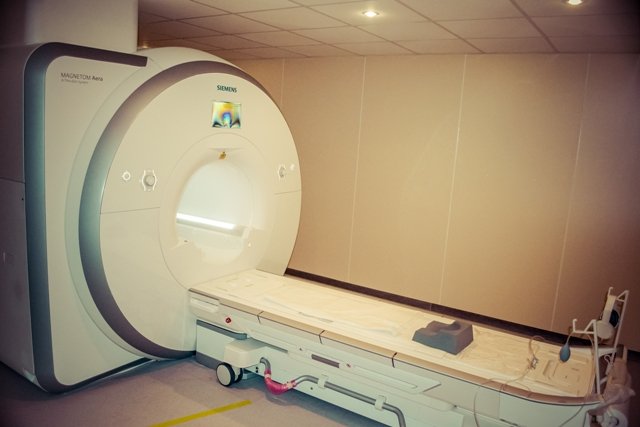Magnetic resonance imaging
What is magnetic resonance imaging?
Magnetic resonance imaging (MRI) — a method of studying the structure and function of various organs and structures: the brain and spinal cord, internal organs, bones, spine, joints, heart and blood vessels.
There is a magnetic resonance microscopy, which is not inferior to the resolution of the biopsy. Therefore, this approach is used in histological and clinical practice; it is often used to obtain images of bones and joints, particularly hyaline cartilage.
Why is MRI?
MRI is recognized as a safe, non-ionizing method. In contrast to CT does not use X-rays. At the study the patient is in a strong magnetic field (Do not take credit cards), which is created and controlled by a system of instruments and programs. The body of a person is a source of electromagnetic signals. The equipment «catches», collects these signals and them separates from interference processes and presents it in the form of images — tomography.
But magnetic resonance imaging has contraindications.
Absolute contraindications — is a condition when MRI represents a threat to the patient’s life.
- The presence of pacemakers (cardiac pacemakers), and implants that are activated by an electronic, magnetic or mechanical means (insulin pumps, electronic middle ear implants).
Why: Pacemaker, which operates on the request, can regard radiofrequency emission of MRI as the contraction of the heart. Pacemaker «does not give» command for heart contraction and cardiac cycle falls. A magnetic field may mixture stimulator in the slot and moves the electrodes.
- The presence of metal brackets (hemostatic clips) on the vessels of the brain. Metal brackets not placed on the vessels are not so dangerous in the late postoperative period; because fibrosis develops over time and capsule is formed that holds the bracket in the same position.
- Metal magnetic foreign bodies can cause eye damage. Objects of ferromagnets are transformed into real aerial bombs in a magnetic field. For example, small clips and pins can reach speeds up to 65 km / h. And then they become dangerous to anyone who is in this room.
- The need for resuscitation equipment (mechanical ventilation, electrical infusion pumps). Why: equipment is disrupted.
Relative contraindications — these are cases that require the utmost caution. The attending physician and a specialist of MRI diagnostics with the patient make a decision about the necessity of MRI. These are situations when it is necessary to examine human body which has a metal (fragments, artificial joints, cava filters, artificial heart valves, and vascular stents).
It is important to be aware of what metal this item is made of to assess the possible risks — displacement of metal object, its failure, heating. Metal implants with magnetic properties cause local artifacts, making difficult the interpreting of images.
Thus, magnetic resonance imaging — is an accurate method of studying the ionizing structure and function. This study is painless. And all the warnings are intended to get the most accurate response with the least discomfort to the patient.
We invite you to have MRI in our clinics in Belarus. There you will find the best and empathetic specialists, modern equipment. The company «Clinics of Belarus» will help you with your visit to Belarus.

